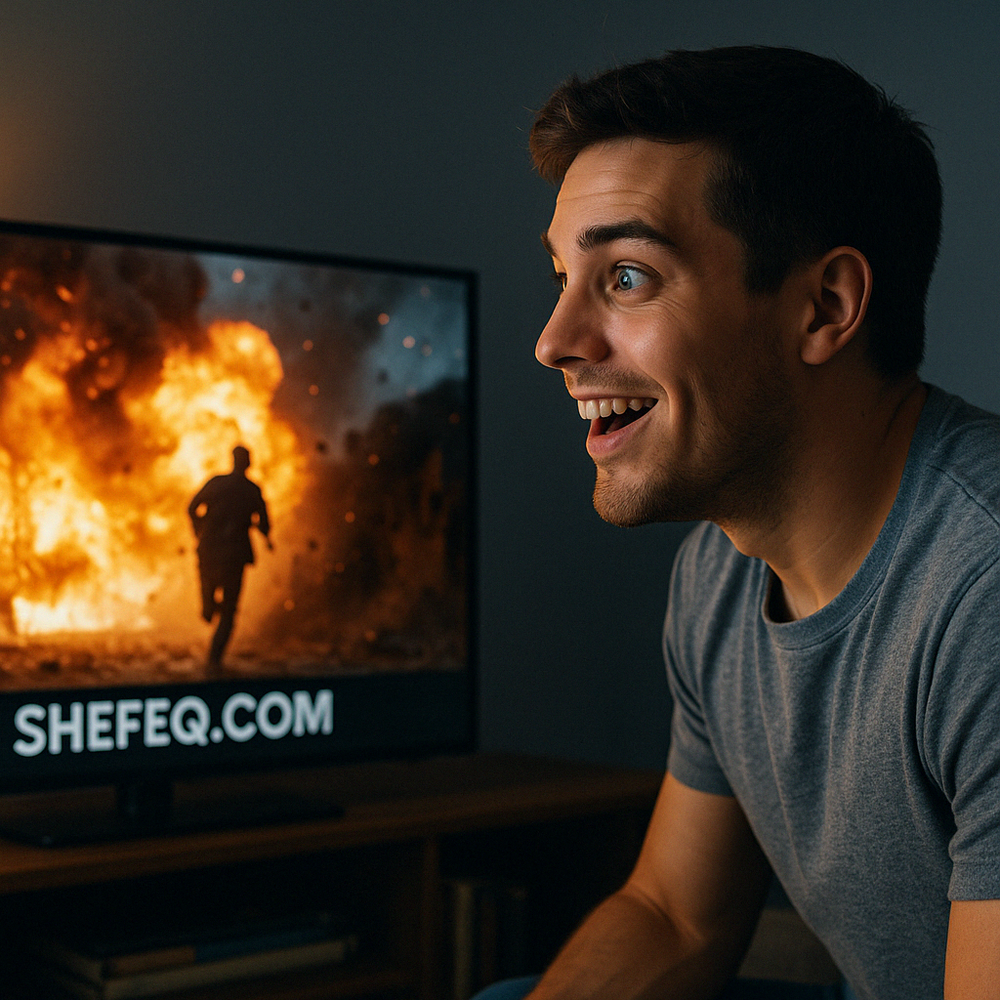Introduction: Why Are We So Thrilled by Explosions, Fights, and Chases?
Fast cars, sword fights, one-on-one confrontations, explosions, and last-minute rescues—these are the core elements of the action genre. Viewers' heart rates accelerate, palms sweat, and eyes remain glued to the screen. But why?
Action films are not just about tension and combat; this genre activates an instinctive power mechanism in the human psyche: adrenaline. In this article, we will analyze the biological, psychological, and sociological appeal of action films, the secret of adrenaline, and how this genre captivates individuals.
1. What Is Adrenaline and How Does It Work?
Adrenaline is the "fight or flight" hormone. When the body perceives a threat, this hormone is released, leading to increased heart rate, muscle tension, and heightened sensitivity to stimuli. In action films, this danger is simulated; there's no real threat, but the body reacts as if there were. This provides a safe yet highly exciting experience.
2. The Connection Between the Brain and Adrenaline in Cinema
When a hero fights to survive, the viewer begins to live through the experience alongside them. The brain perceives the hero's threat as real. During the most intense scenes, the viewer's pupils dilate, body temperature rises, and muscle tension increases. This is why many people say, "Watching an action movie feels like releasing my inner stress."
3. Key Elements: Details That Trigger Adrenaline
-
Chase Scenes: During high-speed car scenes, visual stimuli are so intense that the brain experiences a surge of adrenaline.
-
One-on-One Fights: Especially when a lone hero faces multiple enemies, viewers experience a sense of empowerment, thinking, "I could do that too."
-
Race Against Time: The ticking clock, seconds before a bomb explodes—these cues signal the brain that the danger is real.
4. The Hero Archetype and Power Fantasies
Action films offer viewers a fantasy of taking control. The hero shows no fear, confronting and overcoming their fears. These characters symbolize the viewer's "ideal self." Inner strength and the instinct for self-preservation are visually represented. This is why actors like Bruce Willis, Jason Statham, Keanu Reeves, and Tom Cruise have become symbols of heroism.
5. Evolution of the Genre: From Black-and-White to Complex Narratives
| Era | Characteristics |
|---|---|
| 1960–1980 | Legal justice, police, and detective figures (e.g., Dirty Harry) |
| 1980–1990 | Lone hero against many enemies (classic: Die Hard) |
| 2000s | Technology, conspiracies, international risks (Bourne, Mission: Impossible) |
| Post-2010 | More realistic fights, psychological depth, anti-heroes (John Wick, Extraction) |
6. Biological Reasons: Why Do We Instinctively Enjoy It?
Humans are naturally reactive to danger. Action films activate the brain similarly to how it would during a hunt. The brain thinks, "This experience might help me survive," and thus shows interest. This mechanism allows us to experience wild adventures even in modern, safe environments.
7. Visual and Technical Tricks: How Are Scenes Crafted?
-
Shaky Cam: Increases tension.
-
Slow Motion: Adds emotional emphasis during fights.
-
Music and Silence: Rising music during chases, silence before explosions—these elements alter the viewer's brainwaves.
Special effects are now used so skillfully that the line between reality and fiction blurs.
8. Symbolism and Depth: Not Just Combat
Action films often incorporate themes of justice, sacrifice, and freedom. The hero fights not only physically but also morally. For example, Gladiator, The Dark Knight, and Logan showcase battles of ideals, awakening not just the body but also the soul of the viewer.
9. What Do Studies Say?
A 2019 study showed that watching action films increases viewers' emotional resilience. They make quicker decisions in risky situations and improve concentration skills. Additionally, for male viewers, action films serve as a tool for self-affirmation.
10. Psychological Risks: How Safe Is It?
For sensitive individuals, it may induce aggression and stress. Prolonged excessive viewing of such films can reduce emotional sensitivity. However, for viewers with a healthy psychology, these films can be a positive and energizing experience.
11. Diverse Action Around the World
| Country | Examples | Characteristics |
|---|---|---|
| USA | John Wick, Die Hard | Hyper-realistic strength, lone hero |
| China | Ip Man, Hero | Martial arts and philosophical elements |
| Korea | The Man from Nowhere | Emotionally grounded combat |
| India | War, Pathaan | Spectacular, emotional, and colorful |
These films are rich in national heroism, combat philosophy, and cultural symbols.
12. Recommended Action Films
| Film | Why Watch? |
|---|---|
| Mad Max: Fury Road | Visual adrenaline explosion |
| The Raid | Realistic fight scenes |
| Gladiator | Emotional and physical combat |
| John Wick | Pure action and style |
| Skyfall | Espionage and deep character portrait |
Conclusion: Adrenaline Is Not Just a Hormone, It's an Experience
Action films are not merely about fights and explosions—they are metaphors for strength, purpose, decision, and freedom. This genre creates a unique harmony of emotional and physical reactions in individuals.
Therefore, watching an action film sometimes means telling ourselves:
"I can be strong. I can rise. I can keep going."

